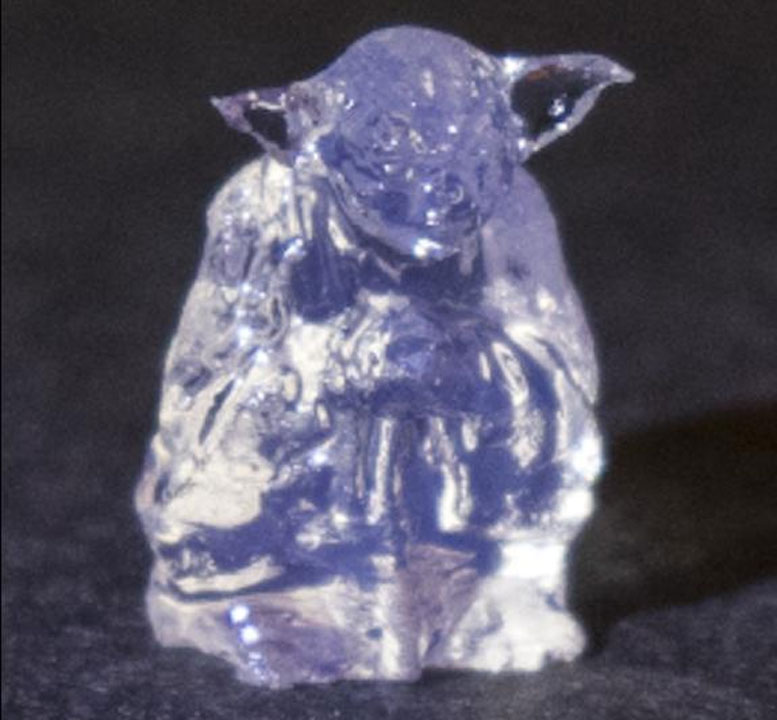Scientists Claim New 3D Resin Print Process Is 30X Faster
A test object was printed in 20sec, rather than 10min.
Scientists at the École polytechnique fédérale de Lausanne (EPFL) in Switzerland have demonstrated an impressively speedy new 3D printing technology. The demo used photocurable resin and targeted intersecting light beams to solidify precisely chosen areas of resin. In their tests, the scientists found they could produce a sample figurine 30x faster than conventional additive 3D printing techniques.
This method of 3D printing, using light to harden selective areas of resin, was first devised at EPFL about five years ago. It has taken that long for the scientists to refine the process and be confident in their achievement, boasting their 3D printer is "one of the fastest in the world."
3D printing aficionados are familiar with the way that traditional additive manufacturing works. It is naturally a pretty slow process, building up an object layer by layer, with drying/setting times involved, putting a brake on speeding up the process beyond certain limits.
The EPFL 3D printer is characterized as using a volumetric method to form objects. In simple terms, a quantity of resin is poured into a glass vessel and spun around. As the volume rotates, light beams intersect target areas of the liquid volume, which then become hard. The scientists claim it is "a very precise method and can produce objects at the same resolution as existing 3D-printing techniques." One of the most appealing features of this newly refined process is that its developers have made it extremely fast.

Looking at the raw numbers, the speed is indeed impressive. The tiny Yoda figurine you see above was created using opaque resin in just 20 seconds. The same file printed using a traditional additive 3D printer took 10 minutes. The resin / light 3D printer provided a 30-fold printing speed increase. Remember, the quality and detail of the two rival print methods are said to be comparable.
In previous work leading up to this news release, the scientists often used clear transparent resin. However, they used opaque resin this time, which they said was previously out of bounds of light hardening 3D printing techniques due to resolution loss. Still, their cross-focused light beam hardening technique worked well, maintaining the fineness of the output structure.
Above: Previous demonstration video using clear resin
Get Tom's Hardware's best news and in-depth reviews, straight to your inbox.
The appeal of the particular opaque resin used in these latest tests is that it is used for crafting biomedical objects. It is flexible and will be of great use to quickly 3D-print biological materials, such as artificial arteries.
This is impressive work thus far, but the scientists have plans to enable the 3D printing of more than one object at a time and continue enhancing the resolution of the output.
If you are interested in 3D printing, Tom's Hardware regularly updates several guides; we keep an eye on the best 3D printer deals around and share our judgments on the best resin 3D printers in various categories.

Mark Tyson is a news editor at Tom's Hardware. He enjoys covering the full breadth of PC tech; from business and semiconductor design to products approaching the edge of reason.
-
digitalgriffin Their tugboat print, which is considered the standard, showed obvious print lines. The Yoda print is a bad example because it has no flat surfaces to check for print lines. But I think this was due to the fact these prints are incredibly small. So the technology use is extremely limited. But I have to give them kudos on figuring out software that knows which resin to harden first. Resin without support sinks to the bottom. I would imagine it's worse in a spinning platform. (Thrown to outside and bottom)Reply
